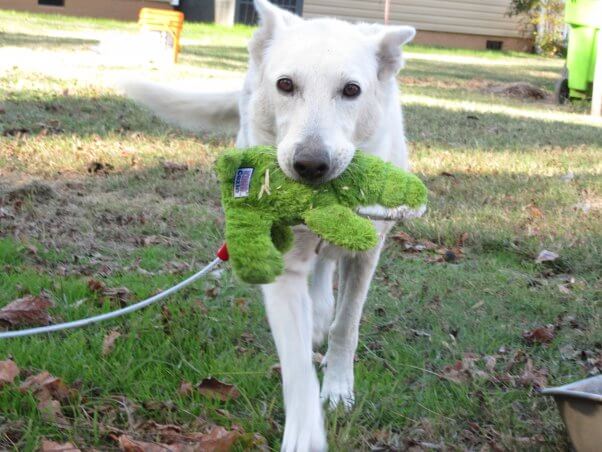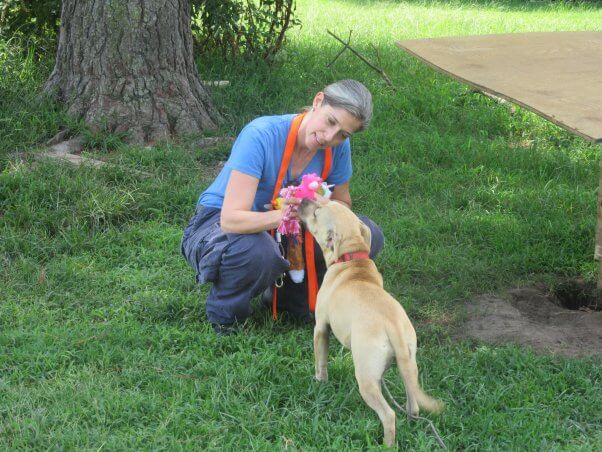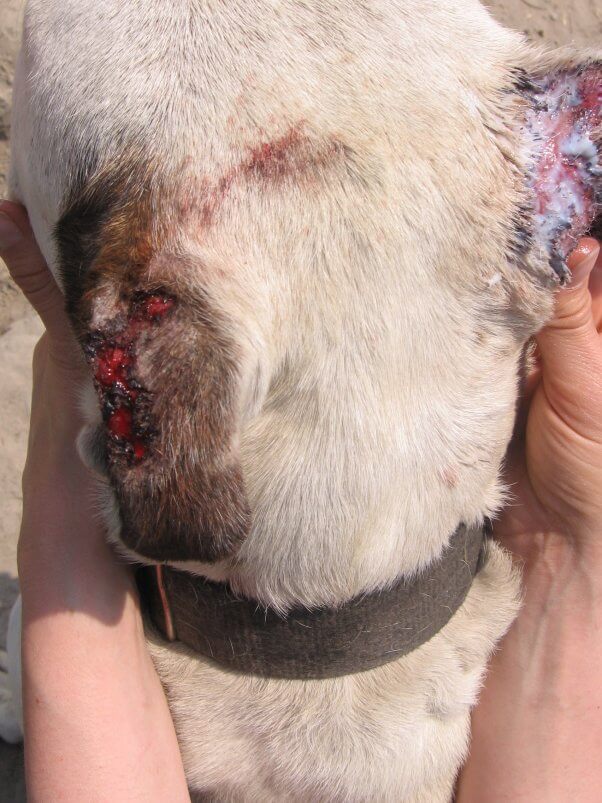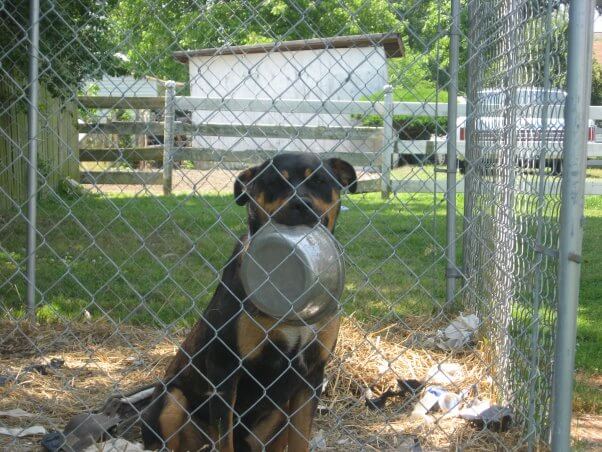Hands-On: Assessing Animals’ Needs
Once you venture out, you’ll likely meet dozens, perhaps hundreds, of dogs and cats who need your help. How will you know what they need? How will you prioritize cases? What constitutes an emergency? For answers to these vital questions, read on—committing this information to memory may be the most important thing you do!

The Basics of Animal Care: Legal Requirements
In most places, the anti-cruelty statute requires that animals be provided with shelter sufficient to keep them reasonably warm, dry, and shaded; access to appropriate food and clean water at reasonable intervals; and veterinary care or euthanasia to abate suffering. Look up your local codes or visit your state legislature website to familiarize yourself with local and statewide regulations. Of course, laws are only useful if they’re enforced by the appropriate agency, which (depending on the area) may be animal control, the police, or the sheriff’s office. Always know, before heading out into the field, what the law is in each of the jurisdictions that you visit and who is charged with enforcing it. Keep a copy of the law in your car as well as telephone numbers for animal control and the after-hours police/sheriff dispatch.

Your goal is to improve the quality of life for animals in your target areas on a long-term basis. Although you should always be able to rely on law-enforcement agencies, you won’t want to call on them every time you encounter a questionable situation. Calling an overburdened animal control agency too frequently can result in lowered responsiveness and automatic irritation when you call, and—worse—it could cause an animal’s legal custodian to refuse to work with you, thereby preventing you from helping the animal.

However, if you suspect animal abuse or chronic neglect and you haven’t been able to make headway yourself, alerting law enforcement is vital and can mean the difference between life and death for a suffering animal. Please see our factsheet “What to Do if You Spot Animal Abuse” for information on documenting and pursuing potential cruelty cases.
Tip: Keep up with changes to your local laws. More and more jurisdictions are recognizing the link between continuous chaining and canine aggression and are passing chaining bans or restrictions. If your target areas don’t yet have such a law on the books, consider working to pass one! For more information, see PETA’s guide to “Breaking the Chain With an Ordinance.”

Your Sense of Urgency Could Save Lives
Be alert, attentive, and aware of everything that you see and feel when examining an animal. You’ll surely run into urgent situations that will require you to think on your feet and act fast. Be ready to explain to an animal’s custodian that a prolapsed rectum or a broken leg requires immediate action. Emergencies include a prolapsed vagina or rectum; suspected parvovirus; severe weakness and/or emaciation preventing the animal from behaving normally; broken limbs, including compound fractures (bones protruding); open wounds that appear to need stitching; infections, including pyometra (uterine infection); bloody discharge from the eyes, ears, nose, mouth, or rectum; and other painful or life-threatening conditions.

It’s the responsibility of an animal’s legal guardian to provide that animal with a healthy, humane living environment, including necessary veterinary care. Keep in mind that in some situations, ailing or injured animals will be signed over to you when custodians realize that they can’t afford treatment or even an exam. It’s up to you to do what’s best for every animal. Always weigh your options carefully, and remember that the animal’s quality of life is your number one priority.

Head to Tail: What to Look, Feel, and Smell For
Eyes
If there’s a discharge or if the third eyelid is visible, that may indicate an eye infection or inflammation (conjunctivitis), an upper respiratory infection, or another disease that can compromise the immune system.
Nose
Dogs’ noses should be slightly wet and cold to the touch. Labored breathing or a green or yellow discharge may be an indication of a serious upper respiratory infection, allergies, or even heartworm disease. (Heartworms basically strangle the heart and limit the amount of oxygen circulating in the animal’s blood.)
Mouth
Foul breath may be an indication of a mouth or tooth infection or mouth ulcers. Check the gums to ensure that they’re a healthy pink color. White gums may be an indication of anemia (iron deficiency), which is often caused by internal or external parasites, such as tapeworms, hookworms, whipworms, fleas, or ticks. Pale gums can also be an indication of internal bleeding. Animals with pale gums may need prompt medical care, especially if they’re listless.
Ears
Ears should be clean and free of odor or discharge, either of which may be an indication of ear mites or an ear infection. Untreated ear mite infestations cause intense itching, often leading animals to scratch the skin around their ears until it bleeds.
Neck
You should be able to fit at least two fingers under an animal’s collar. Always check to make sure that dogs aren’t wearing choke or prong collars (especially when chained!), which are painful and can cause injury. Cats should wear only breakaway collars. Be especially diligent about checking puppies’ and kittens’ collars—people often place collars on young animals but don’t bother to loosen them as the animals grow, causing terrible pain and infection so severe that the collars can only be removed surgically. Be alert for the smell of rot or infection—collars can become so deeply embedded in the neck that the skin will grow around them.
Feet
For animals who are limping or hesitant to put weight on front or back legs, gently check between their toes for a lodged rock, burr, splinter, or tick. For animals kept in confined spaces, check their pads for redness and irritation from urine burns (from being forced to stand, sit, and lie amid their own waste).
Abdomen
A bloated abdomen is a bad sign and may be an indication of untreated internal parasites. Parasites such as tapeworms, hookworms, and whipworms lodge in animals’ intestines and feed off their blood, which makes it difficult for animals to absorb nutrients. Heartworm and liver diseases in their more advanced stages can also cause bloating because of fluid retention.
Skeletal Structure
Animals should have some good muscle tone and some fat. You should never be able to count ribs or see protruding hip bones or a protruding spine. You may find this guide useful for assessing a dog’s weight. Please be sure to put your hands on thick-coated dogs like chow-chow and husky mixes, as their fluffiness may hide protruding ribs and hip bones––gently run your hands up and down the animal’s body.
Stool
Loose stool or diarrhea can be a sign of parasites or a viral or bacterial infection. With dogs, bloody diarrhea is a red flag for parvovirus, a deadly, highly contagious disease (especially to puppies) that attacks the stomach lining and causes vomiting, dehydration, and often a slow death. Parvovirus is easily preventable with an affordable vaccine, but treatment once it has been contracted is often unsuccessful and extremely expensive—up to $1,000 per day. As noted above, suspected parvovirus constitutes an emergency.
Skin and Coat
The skin should look healthy and be free of fleas and ticks, and the fur should be uniform in growth (without patches of redness or hair loss) and free of matting and loose hair. Matted fur is an emergency: Mats can be extremely painful—tugging at animals’ skin, limiting their movement, and even cutting off circulation—and they can hide parasites and wounds. Read about Max’s ordeal to understand just how serious matted fur can be.
Look for excessive itching, which may be a sign of mange. Animals suffering from mange will scratch themselves bloody and hairless and may even develop a secondary infection from breaking the skin. There are two types of mange: demodectic mange (aka “demodex”) and sarcoptic mange (aka “scabies”). A veterinary professional must perform a skin scrape and look at the skin sample under a microscope to identify which form it is. Demodex is an immunodeficiency condition and isn’t contagious, but scabies can be transmitted to other animals, including humans.
Overall Disposition
Animals should have a healthy appetite when offered food. (However, fearful animals and animals who are nervous around new people may not eat in your presence.) Look for signs of lethargy or depression, which are usually indicative of a physical problem. Animals who appear listless and have no appetite, have to make an effort to stand up or lift their head, and generally seem uninterested are likely suffering and need prompt medical attention.

Living Conditions
All animals should have easy access to a clean water receptacle containing drinkable (“potable”) water and a living area free of their own waste and debris (such as broken glass, junk, etc.). If a dog is tethered, the tether should be a lightweight tie-out with swivels at both ends to prevent tangling. They must have easy access to their food, water, and shelter at all times.


